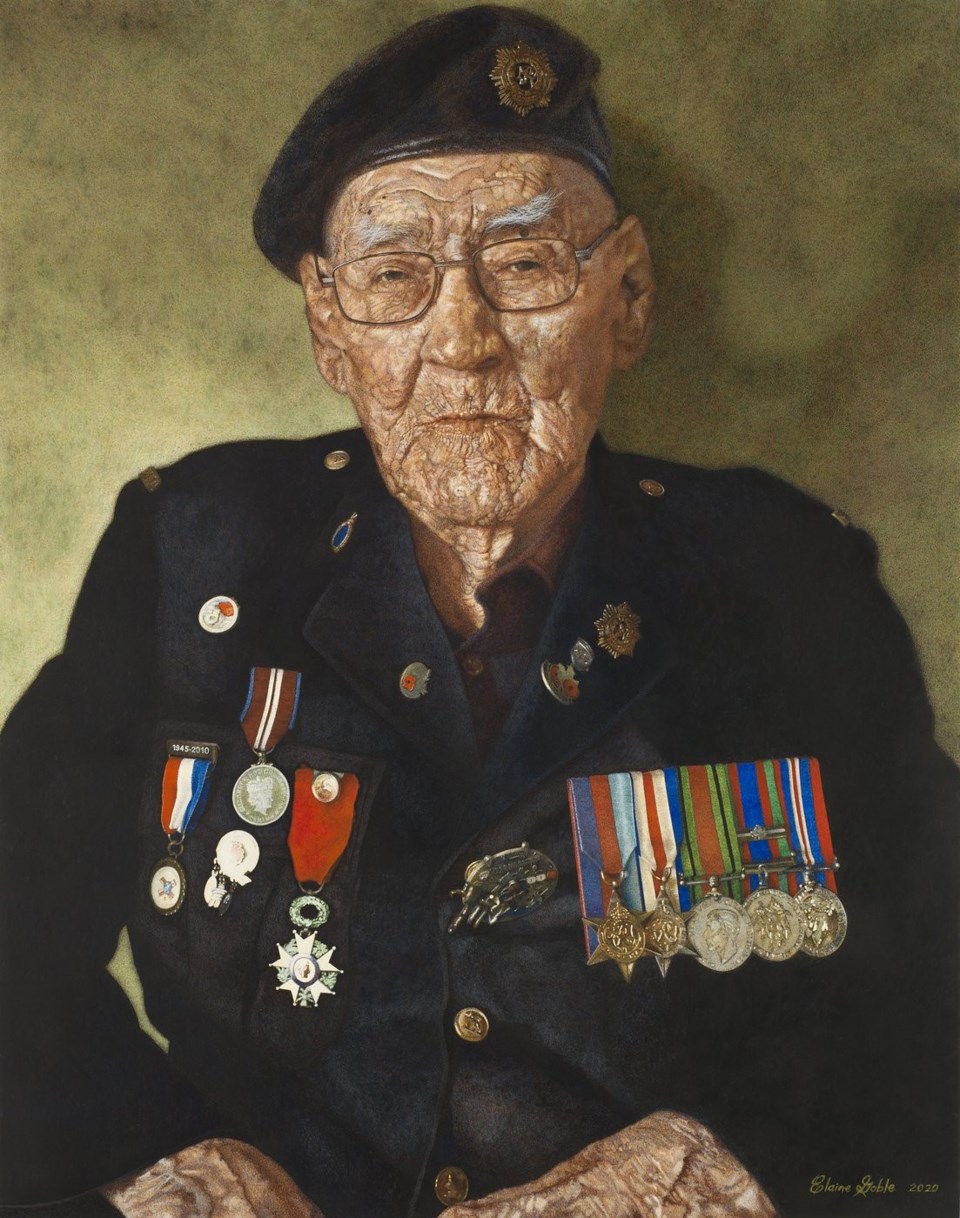Philip Favel, 98, has never stopped fighting for Indigenous veterans since he landed on Juno Beach.
On Sunday, the Canadian War Museum unveiled a portrait honouring him for Indigenous Veterans Day. His granddaughter, Nadine Favel, said he’s the oldest living Indigenous Second World War veteran in Canada.
She said he watched the ceremony from his home on the Sweetgrass First Nation near the Battlefords, commemorating a lifetime he spent pushing for fair compensation for Indigenous Second World War veterans.
Favel represented him at the ceremony in Ottawa. The event featured Canada’s top soldier, Gen. Jonathan Vance, and Assembly of First Nations National Chief Perry Bellegarde, who noted returning Indigenous soldiers didn’t receive equal benefits upon returning home.
Favel will be the first Indigenous veteran to have his portrait hang in the museum, his granddaughter said. It was act of reconciliation because he’d always “fought for the Indigenous rights of veterans. That’s what he’s done all his life,” she added.
Ottawa artist Elaine Goble, who was selected to paint the portrait, worked 10-hour days for seven months to complete the piece. She said she hopes the painting will speak for Favel long after her lifetime, taking on “a life and voice of its own.”
Hélène Cayer, who is Algonquin, facilitated the portrait and honours. She recalled standing on Sunday with Nadine Favel, who was amazed at how lifelike the portrait is, Cayer said.
Favel was born in 1922 and grew up on his father’s farm on the Sweetgrass First Nation. He joined the Canadian Army in 1942 as the Second World War escalated overseas. Before travelling to join the war effort in England, he trained in Maple Creek.
Favel took part in the largest naval invasion in history, landing on Juno Beach on D-Day. In the fighting that followed, his job was to drive supplies to and from the front lines, all while under threat as his truck sustained damage like smashed windshields, according to a Government of Canada biography.
Favel went on to serve in Belgium, the Netherlands, and Germany. He would also earn the French Legion of Honor Medal for caring for an injured person and helping two hungry children during the war, the biography said.
Nadine Favel said that memory of two young children, begging for food with their hands out, struck him. Years later she said her grandfather continued to check if his family had enough food, sometimes visiting to double-check that they did.
Released from service in 1945, he returned home and began a second battle: Fighting so Indigenous veterans would receive the same benefits as their non-Indigenous counterparts.
Nadine Favel said he was a “hard worker” who never stopped pursuing that goal and instilled those values in his children, grandchildren and great grandchildren.
“I’ve always been proud of him and the person that he is. (I’m) proud to be a Favel because of him.”




